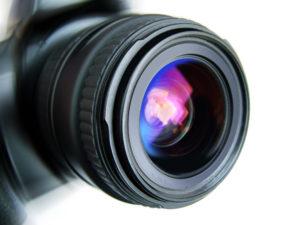 Does the thought of speaking on camera for a video blog, television interview or podcast send shivers up your spine? Whether you’re building a base, reconnecting with customers, or working to change minds and hearts, the ability to be comfortable and effective on-camera has never been more important. You’ll develop stronger ties with your key audiences if you bring your best message to light under the lens. Here are a few tips from our Communications Training work for engaging not just the camera lens, but the audiences who will be watching.
Does the thought of speaking on camera for a video blog, television interview or podcast send shivers up your spine? Whether you’re building a base, reconnecting with customers, or working to change minds and hearts, the ability to be comfortable and effective on-camera has never been more important. You’ll develop stronger ties with your key audiences if you bring your best message to light under the lens. Here are a few tips from our Communications Training work for engaging not just the camera lens, but the audiences who will be watching.
Prepare. Prepare. Prepare.
The old Boy Scout adage, “be prepared,” really matters. Whether you’ve been approached about an on-camera interview or are deliberating whether to launch a podcast series, time is on your side. You need time to prepare, even if it’s only for a few moments. Let’s say you’ve been asked to answer some questions for the local newscast. Find a way to give yourself a few minutes to think about what messages you will want to get across. Even if the inquiry is in person and deadlines are tight, you can ask for a little time to “free up your schedule” or “make a quick call.” Then use that time to PREPARE! Check in with your Director of Communications, marketing department, or other public relations assets. They’ll need to know you’ve been approached, and will be in the best position to help you field questions and anticipate any pitfalls.
Get Your Message Straight.
Long before anyone at all approaches you about delivering an on-camera message, you should understand and have a firm command of the objectives of your enterprise and what must be communicated to fulfill those goals. Use your prep time to review the message(s) you most want to deliver. Number and prioritize the points in your mind. And don’t just think them. WRITE DOWN what you most want your audience to remember. This will help cement the points in your mind and ease you past any nerves. Try to anticipate the questions and if time allows, practice what you will say and how you will say it.
Be Brief.
Keep it concise. While you want to appear friendly and accommodating, make your answers count. Stick to the subject. And don’t volunteer more than what is asked.
Stay Cool.
It’s not every day that you’re asked to stand—or sit—in front of a camera. So take a few deep breaths. Just like an athlete warms up before engaging in sport, so should you warm up your voice. Tongue-twisters are a great way to do this and help to calm nerves, if you can find a private place to say them. Whether the reporter intends to rattle you or not, you may feel like you’re under the gun. But, ultimately, the only one who can steal away your control is you. Keep your expression neutral and your mind in the game. Don’t get angry—get on message. And remember, the best way to face down any question—benign or hostile—is to respond firmly and coolly with the facts and messages that support you and your enterprise. You can stay calm and collected when you are prepared.
Be Camera-Wise.
Keep in mind these simple tips for working in front of the lens.
- Look the reporter in the eye when being interviewed in person.
- Look the camera in the lens when you’re being interviewed remotely.
- Look alert, interested, and open. Smile if appropriate.
- Go to “expression neutral” when the reporter is speaking. Don’t react. The camera is still on.
Posture counts.
- Sit up or stand straight. Don’t slouch.
- If standing, find a comfortable, stable stance. Hands should be at your side, or if more comfortable, clasped in front, Do not clench or grip your hands together.
- If seated, men should keep their feet on the ground; women can cross their legs at the ankles if wearing a skirt. If seated, place your hands in your lap.
- Don’t make big gestures.
- Don’t fidget.
- Lean forward slightly.
- Don’t swivel or sway
- Don’t jingle the change in your pocket.
Camera-friendly grooming can keep some ill-advised fashion choices from operating against you.
- Wear solid colors, if possible—not white. It will create havoc with the TV lens and/or make you look washed out.
- Avoid distractions: loud, bold plaids, stripes or patterns, shiny fabrics, wild ties or scarves, heavy make-up or large jewelry—especially anything that can make noise.
- Wear comfortable clothing, but dress professionally.
- Comb or smooth hair, if appropriate.
- Remember, the interview is about your content, not your look. Professional grooming is important, a spa treatment is not.
- Don’t wear sunglasses—even if your interview is outdoors.
You don’t need to be a pro to come across well in front of the camera. But with a good message, a few how-to tips and a little time for preparation, you can seem as at home in front of the camera as you are behind the desk. Learn more about preparing for media interviews and other public speaking at www.waingergroup.com.

